Prokofiev: Cinderella (Paris Opera Ballet)
Introduction
After the success of Romeo and Juliet, Prokofiev always intended to continue in this genre. This work was begun in 1940, but wasn't premiéred until 1945 as he was more involved in composing patriotic works, including War and Peace. Since its first performance, it rapidly became a staple of the classical ballet repertoire, being taken up especially by Frederick Ashton, and for this production, Rudolph Nureyev.
Nureyev was initially more interested in creating a more 'traditional' 17th century setting for this work, but was finally persuaded by Petrika Ionescuo, and their shared love of the golden age of Hollywood, that updating the story may well be a good thing.
So, they did.
All the major plot devices are still there, except for the magical element.
Cinderella is still the put-upon skivvy, who has a rotten step-mother and two slightly more rotten step-sisters. Her father is a drunk ex-actor, and so can be relied upon to be completely useless. The step-sisters (who cannot really be descibed as 'ugly' here) are terribly excited about possible roles in a new film being shot, and so are practising their dances in the hope they will be soon become glamorous stars. Cinderella herself of course, will not be allowed out to the shoot, and so has to imagine being a film star by dressing up in her father's old film costumes.
Very soon afterwards, some random film producer arrives unnanounced and injured after his plane crashes nearby, and it is Cinderella who helps him recover. He is of course the 'fairy film producer', and is so taken by this rather scruffy young lady, that he sets up a plan to take her to the film set, transformed into a budding Hollywood starlet.
The story is as you would expect. Cinderella and the male lead (or Prince) fall for each other over a few dances, and she is chosen to star in the film with him. She has to leave by midnight, amazingly just after the final scene has been filmed, and everything continues as you would imagine.
Video
A very fine NTSC picture, and one which doesn't show some of the usual problems which ensue in very dark scenes, of which there are many in this production.Audio
Very good DTS sound (and also a very good stereo option too). The orchestral balance is excellent, and solo instrumental items sound perfectly natural, although any slight blemishes (especially the bass clarinet squeaks at the beginning) are also horribly clear.
Extras
A very satisfactory hour-long documentary by Reiner E Moritz entitled 'Cinderella goes to Hollywood'. All the main protagonsists (apart from Nureyev unfortunately) have their say on the production, with the most interesting spiel coming from Ionesco (and his impressive facial hair) himself.
Conclusion
This production Prokofiev's ballet is great fun. Everything is geared towards the nostalgia of the 'old' Hollywood, even from the Introduction, which, as the term infers, introduces us to all the major characters as if they were arriving at the ball (although turning it into more of a film prèmiere).
The whole idea of turning the traditional Cinderella story into a rags-to-film-contract scenario was bound to have been laden with trepidation for someone like Nureyev, as he was never one to shy away from stating his opinion. It's actually amazing how those who helped him develop the production stuck with him and his volatile artistic temperemant, but judging by the results, it could only have been a good thing.
The production has obviously been carefully thought out, with nods to various classic Hollywood moments. Everything from King Kong, Singin' in the Rain and Charlie Chaplin is included, yet never seem out of place. I particularly enjoyed the black and white sequences, which are a nice addition to what the theatre audience would have experienced on the nights.
The fact that the full Prokofiev ballet is used helps enormously, as it shows that the music was never going to take second place to whatever strange ideas were being formulated for the stage, and the playing of the orchestra, brilliantly paced by Koen Kessels, makes you imagine that you are listening to one of the best Hollywood scores ever written. Of course, many film composers 'borrowed' quite freely from styles such as this, and so perhaps this shouldn't be too much of a surprise. And indeed Prokofiev himself stole from his own music for the sequence in which the step-sisters dance with three oranges, so I shouldn't really complain.
The quality of playing is not really world class however, and sounds quite 'French' in many of the woodwind solos, so may not be to everyone's taste, but in general is very satisfying.
Agnès Letestu (Cinderella) is superb as the eponymous character, showing much of the 'Hollywood glamour' she requires for her transformtion even when she is in rags. Her acting is excellent, as is that of the 'Producer' (Wilfried Romonie), which seems to be a role that demands more acting than dancing skills.
The rather sexy 'ugly' sisters played by Laëtitia Pujol and Stéphanie Romberg are so full of life that it's amazing how long they can keep it up. The fact that the former is an 'Étoile' and the latter just a 'Premièr danseur shows what sort of pool of talent this company is able to call upon.
Cinderella's step-mother is still a 'pantomime dame' character, and here she is danced wonderfully by Stéphane Phavorin, with a huge amount of comedic talent, yet keeping a nasty and sadistic side ready for ceratin moments.
If there is any disappointment in the performance, it is from José Martinez (The Film Star), because he comes across as more of a stereotypical pompous star rather than one with real 'quality' (purely due to his acting rather than dancing abilities). He definitely has the looks though, but doesn't grab your attention as much as the 'Producer' does.
All in all however, this is a very fine set from Opus Arte, and it would be hard pushed to be beaten by a more traditional production.
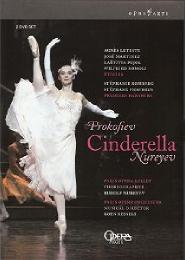
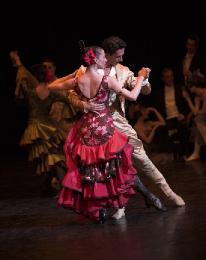
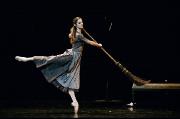
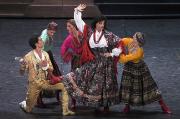
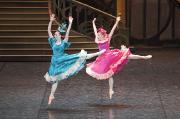
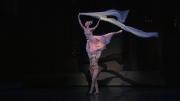
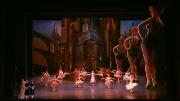
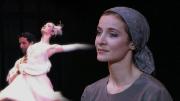
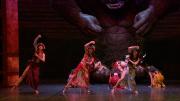
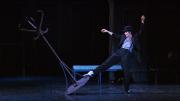


































Your Opinions and Comments
Be the first to post a comment!